Laptop and Desktop graphics perform differently despite having the same names. I’m going to compare Nvidia GTX 1660 Ti performance between a laptop and desktop to show you the differences to expect in games.
Let’s start by looking at the differences in specs between the desktop and laptop 1660 Ti. 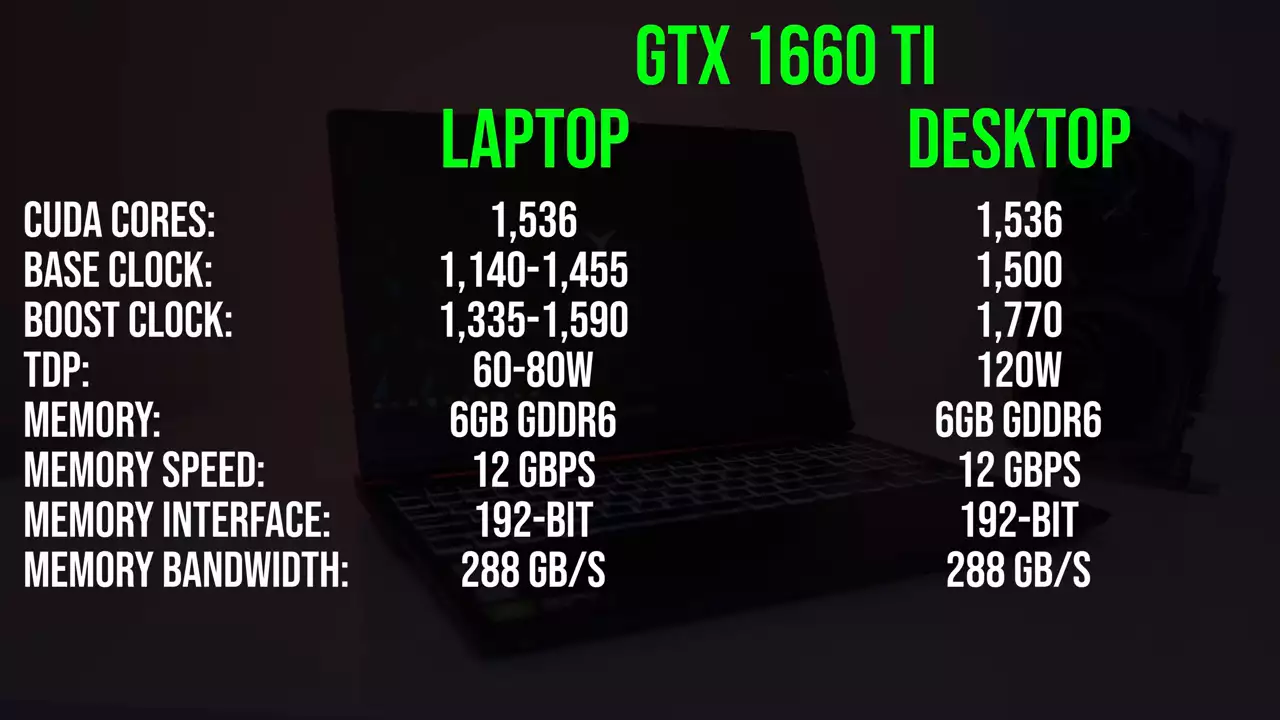 For the most part, they share a lot of similarities. They’ve got the same amount of CUDA cores, memory and memory speed. The key difference is the power limit. The desktop option has a higher 120 watt TDP so it’s able to reach higher clock speeds and perform better. The laptop version has a lower power limit because it needs to run cooler as laptops typically have more thermal restrictions.
For the most part, they share a lot of similarities. They’ve got the same amount of CUDA cores, memory and memory speed. The key difference is the power limit. The desktop option has a higher 120 watt TDP so it’s able to reach higher clock speeds and perform better. The laptop version has a lower power limit because it needs to run cooler as laptops typically have more thermal restrictions.
For the laptop I’ll be testing with my Lenovo Y540, which has an 80 watt Nvidia GTX 1660 Ti paired with an i7-9750H CPU and 16gb of memory in dual channel.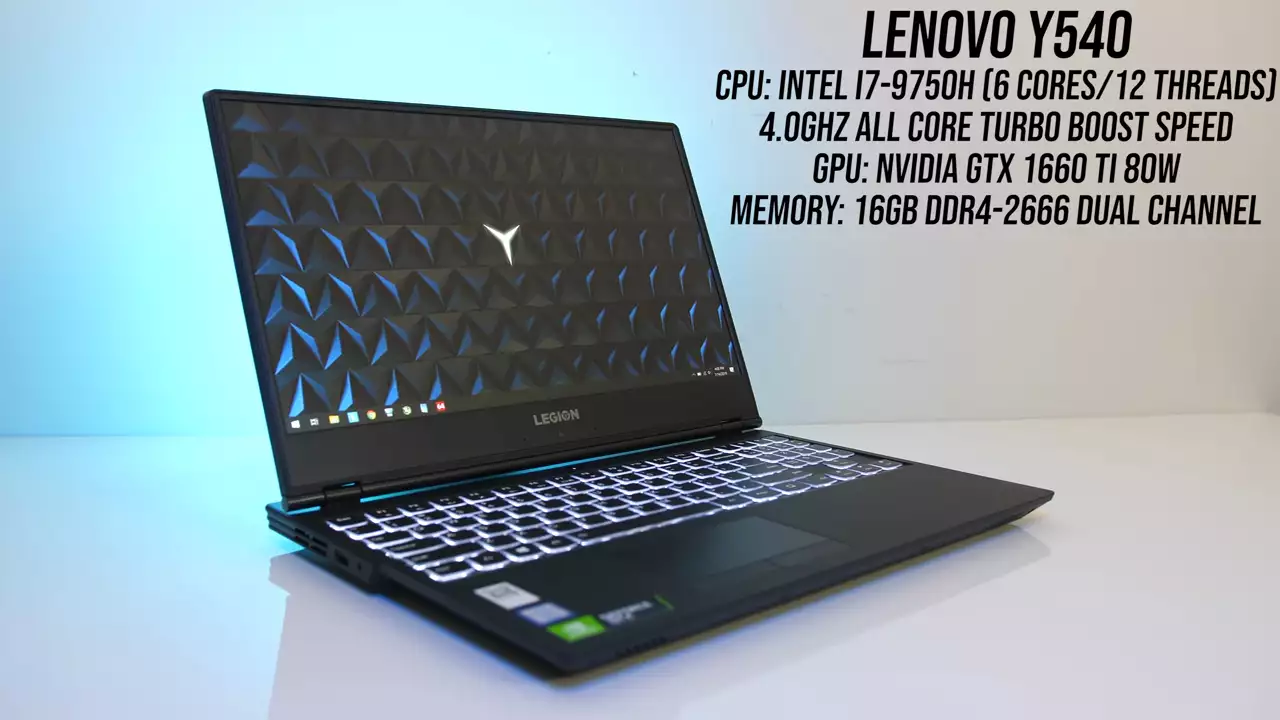 It wasn’t possible for me to get a laptop with a desktop CPU to do this testing, so in order to do it as fairly as possible I’ve used the Intel i7-8700K capped at 4GHz. I chose this because it still has 6 cores and 12 threads just like the i7-9750H, and by locking it to the same maximum all core clock speed as the 9750H the performance ends up being quite close.
It wasn’t possible for me to get a laptop with a desktop CPU to do this testing, so in order to do it as fairly as possible I’ve used the Intel i7-8700K capped at 4GHz. I chose this because it still has 6 cores and 12 threads just like the i7-9750H, and by locking it to the same maximum all core clock speed as the 9750H the performance ends up being quite close.
See also: gtx 1650 ti vs gtx 1650
There was around a 100 point difference in Cinebench R20 when comparing to the best case 9750H result. I’ve also used 16gb of memory in dual channel for the desktop at the same speed as the laptop, and the graphics card is my MSI Gaming X GTX 1660 Ti. This isn’t a perfect comparison, as there are naturally differences between the platforms with laptops and desktops, that’s just the way it is, however I’ve tried my best to minimize this difference as much as possible so that we can get a fairly good idea of GPU only differences. I’ve also tested both machines with the same Windows updates and Nvidia drivers, so with that out of the way, let’s get into the results.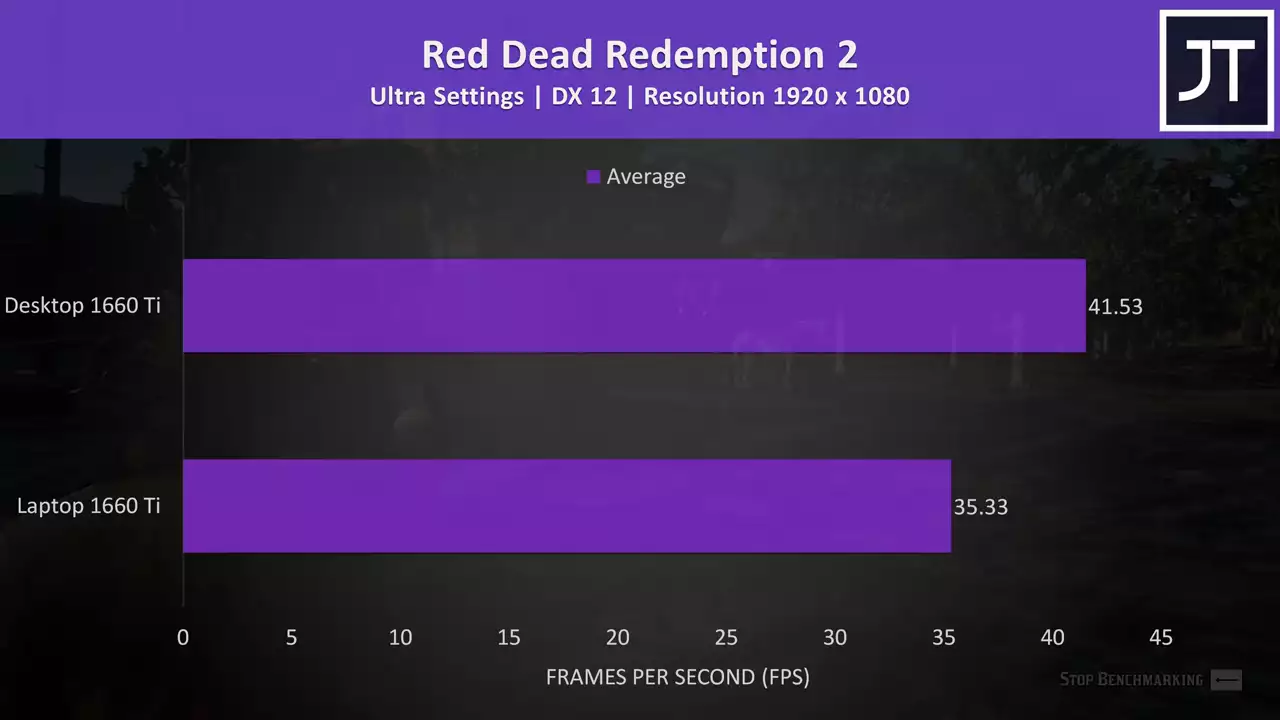
Red Dead Redemption 2 was tested using the games benchmark tool with the highest settings available. In this test the desktop graphics was 17% faster when compared against the laptop graphics. 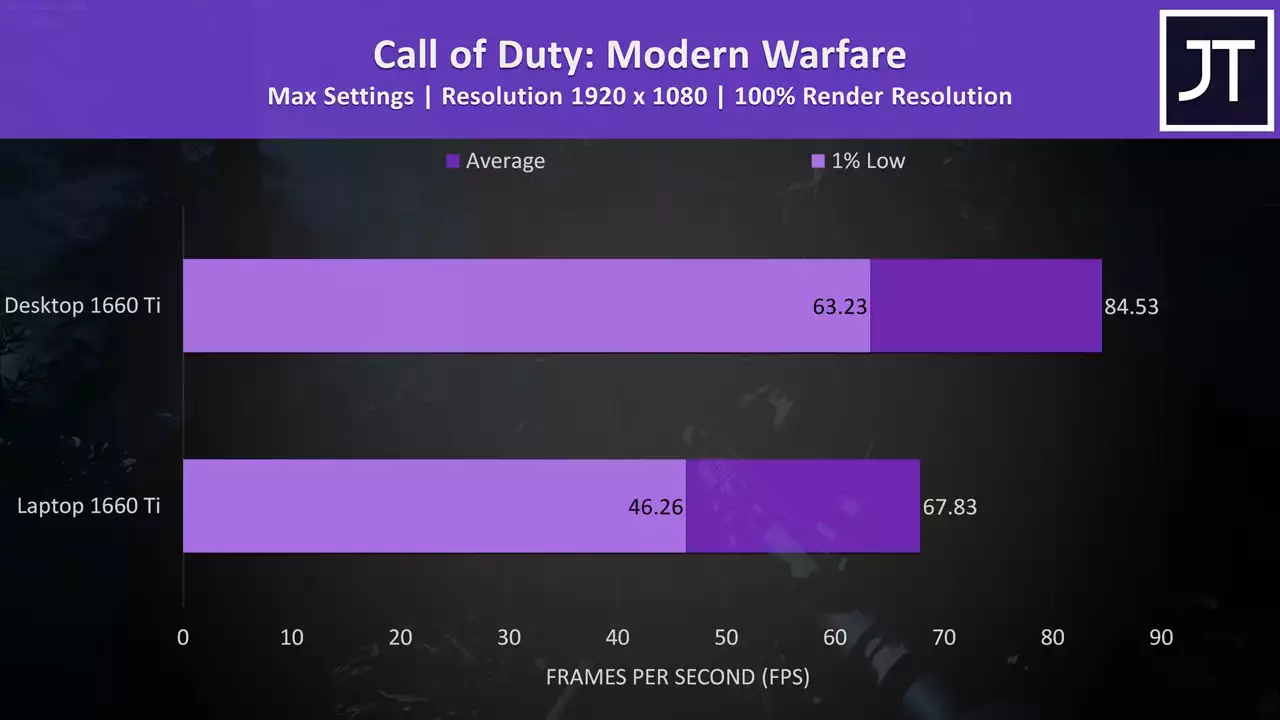 Call of Duty Modern Warfare was tested in campaign mode, and I went through the same section of the game on both machines. This game saw the largest difference out of all titles tested, with the desktop graphics a massive 24% higher in average FPS, but a much larger 37% boost to 1% low.
Call of Duty Modern Warfare was tested in campaign mode, and I went through the same section of the game on both machines. This game saw the largest difference out of all titles tested, with the desktop graphics a massive 24% higher in average FPS, but a much larger 37% boost to 1% low. 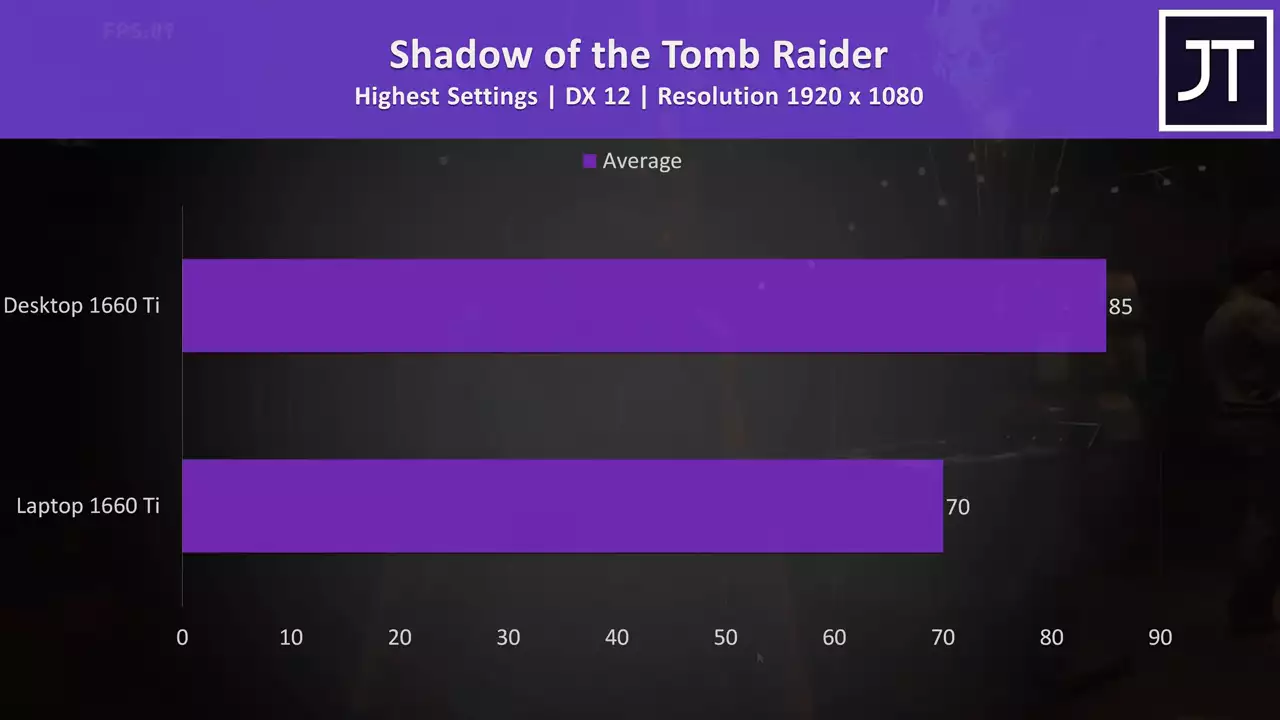 Shadow of the Tomb Raider was tested with the built in benchmark, and this was another above average result for the desktop graphics, which was 21% faster than the laptop in this test.
Shadow of the Tomb Raider was tested with the built in benchmark, and this was another above average result for the desktop graphics, which was 21% faster than the laptop in this test. 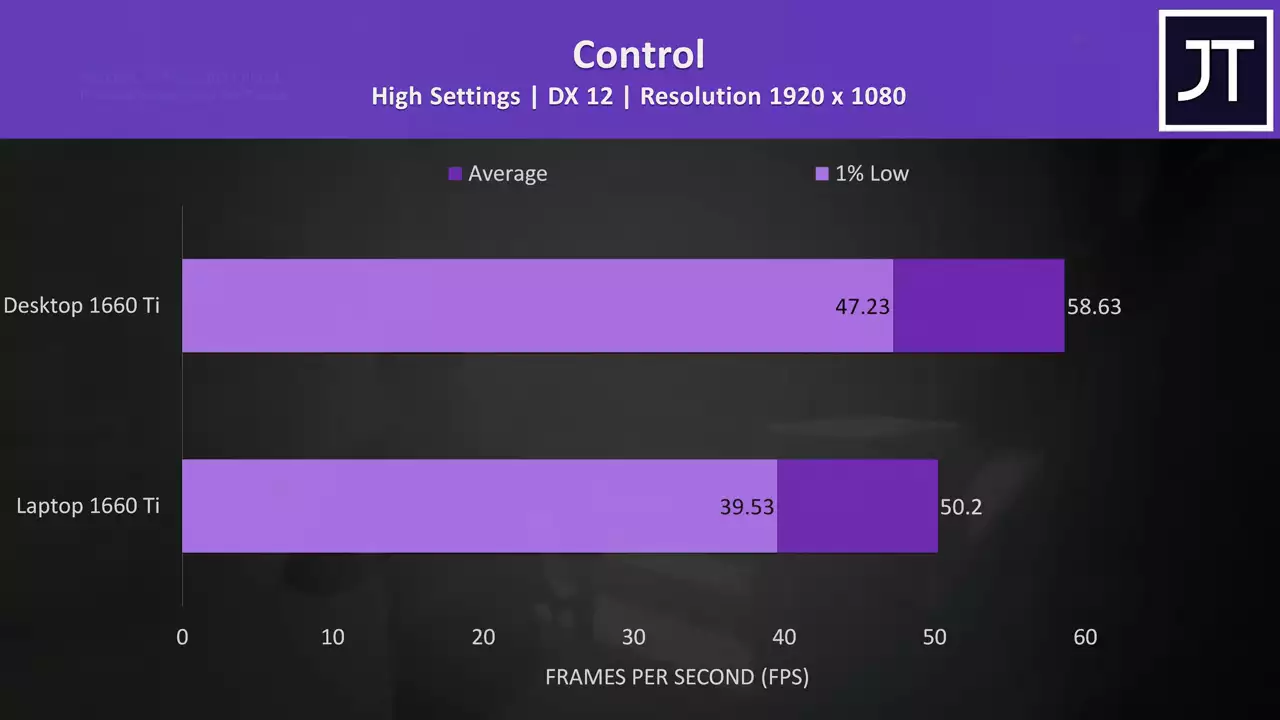 Control was tested by walking through the same section of the game on both machines. In this game there was a smaller 17% higher average frame rate from the desktop, smaller than the other games, but still a fair improvement.
Control was tested by walking through the same section of the game on both machines. In this game there was a smaller 17% higher average frame rate from the desktop, smaller than the other games, but still a fair improvement.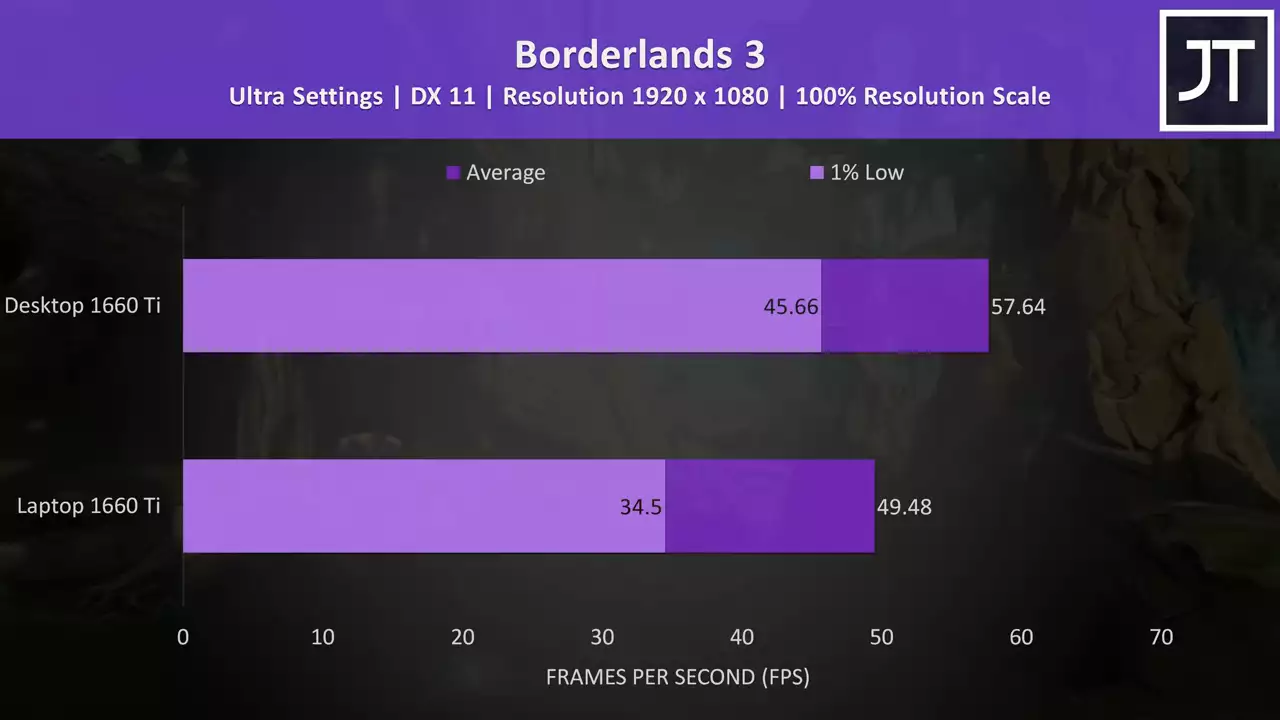 Borderlands 3 was tested with the benchmark tool, and the desktop graphics saw a 16.5% higher average frame rate when compared with the laptop result.
Borderlands 3 was tested with the benchmark tool, and the desktop graphics saw a 16.5% higher average frame rate when compared with the laptop result. 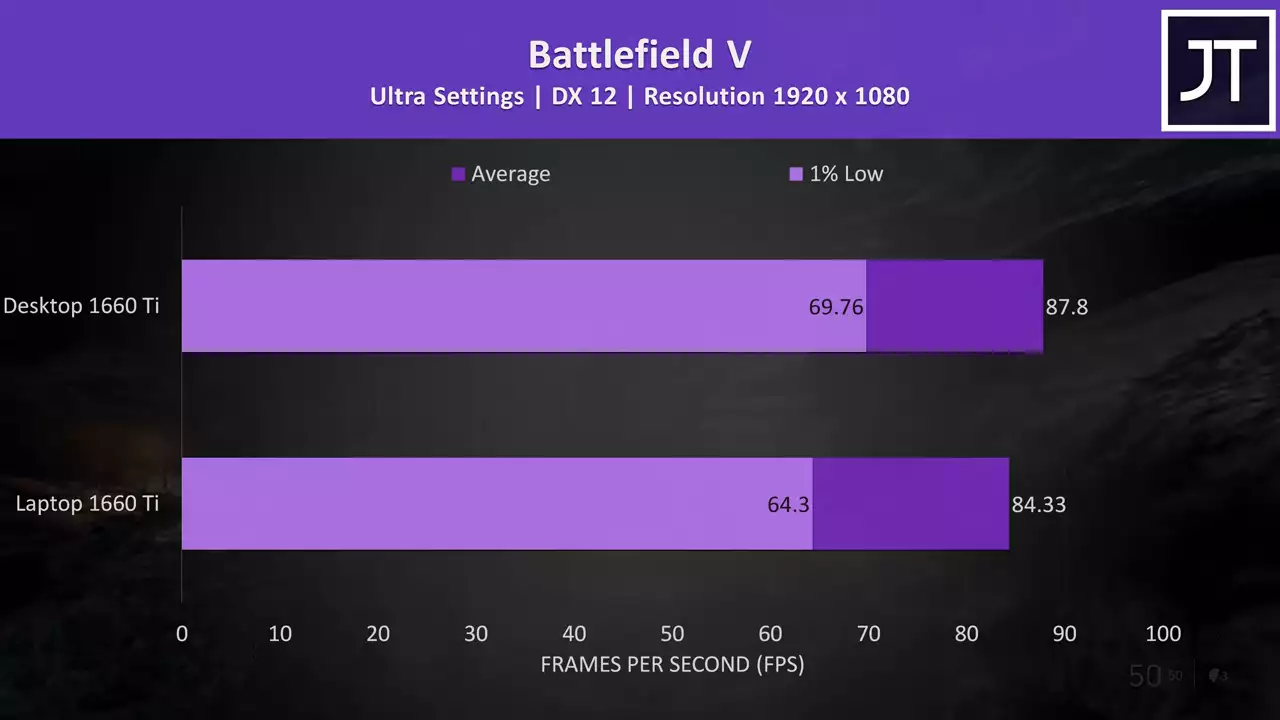 Battlefield V was tested in campaign mode, using the exact same section of the game for the testing. There was a far lower difference between the two in this test, with the desktop graphics coming out just 4% faster.
Battlefield V was tested in campaign mode, using the exact same section of the game for the testing. There was a far lower difference between the two in this test, with the desktop graphics coming out just 4% faster.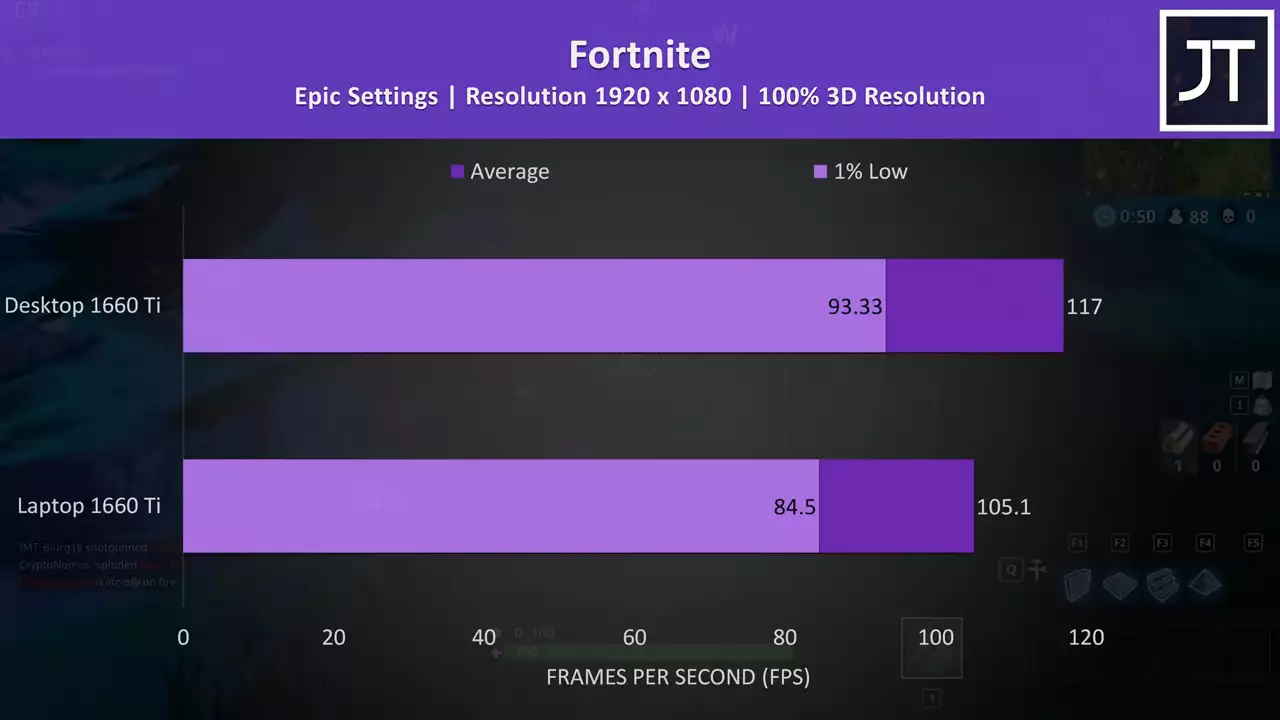 Fortnite was tested using the replay feature, compared to most of the other games tested there was a smaller difference here, with the desktop graphics 11% faster in average FPS.
Fortnite was tested using the replay feature, compared to most of the other games tested there was a smaller difference here, with the desktop graphics 11% faster in average FPS. 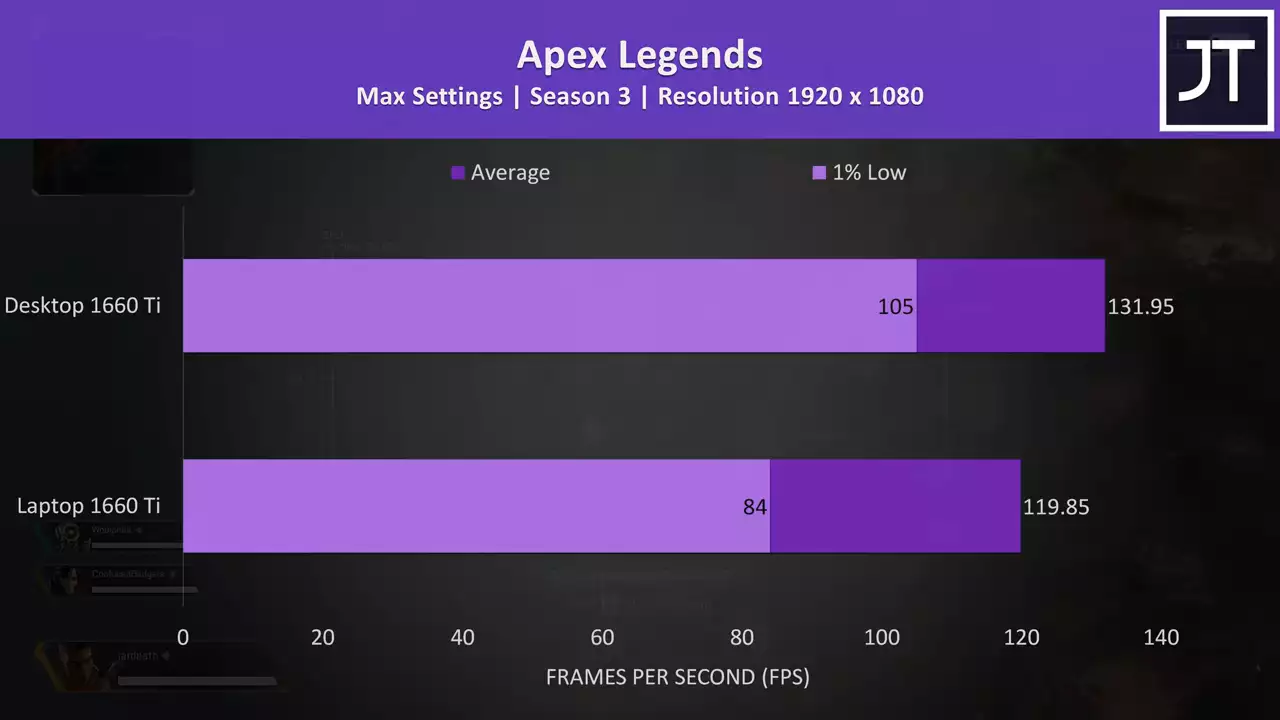 Apex Legends was tested at max settings running through the same section of the game on both machines. In this test the desktop graphics were just 10% ahead of the laptop, which is below average out of the titles tested.
Apex Legends was tested at max settings running through the same section of the game on both machines. In this test the desktop graphics were just 10% ahead of the laptop, which is below average out of the titles tested. 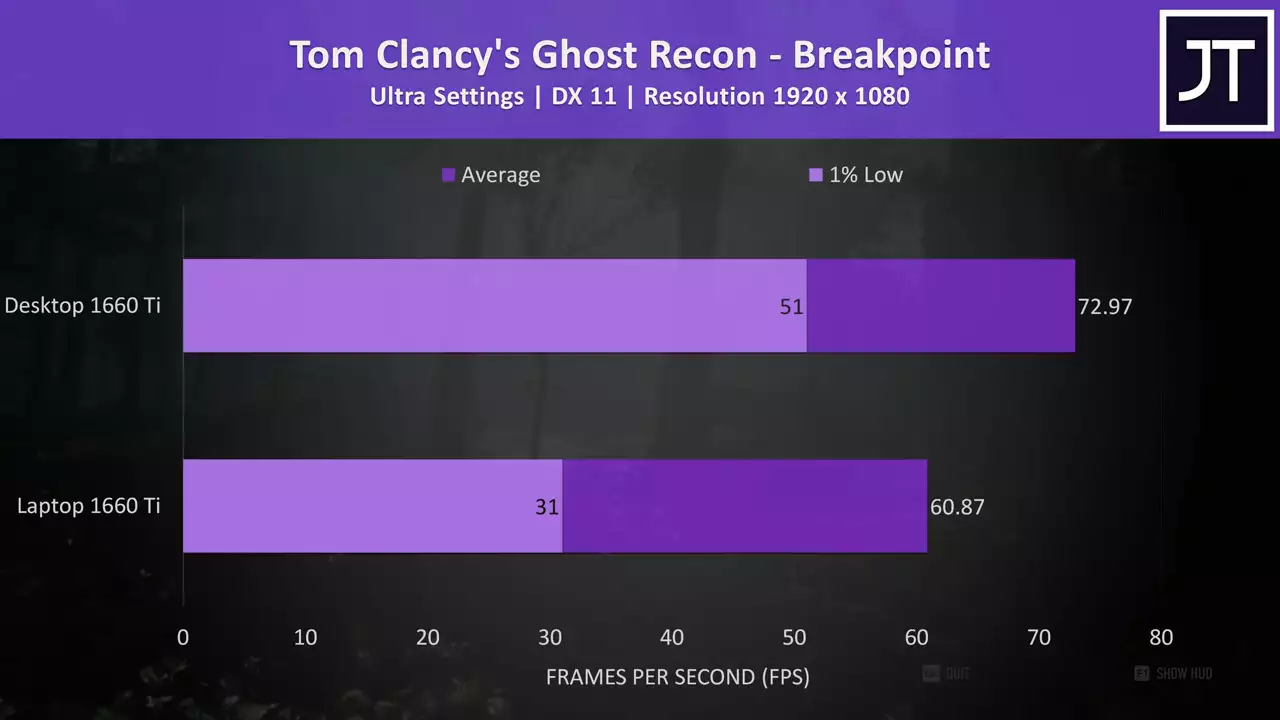 Ghost Recon Breakpoint was tested using the games benchmark tool. There was a larger 20% improvement to average FPS here, but a much higher change seen to 1% low performance, granted that may be due to the CPU difference.
Ghost Recon Breakpoint was tested using the games benchmark tool. There was a larger 20% improvement to average FPS here, but a much higher change seen to 1% low performance, granted that may be due to the CPU difference.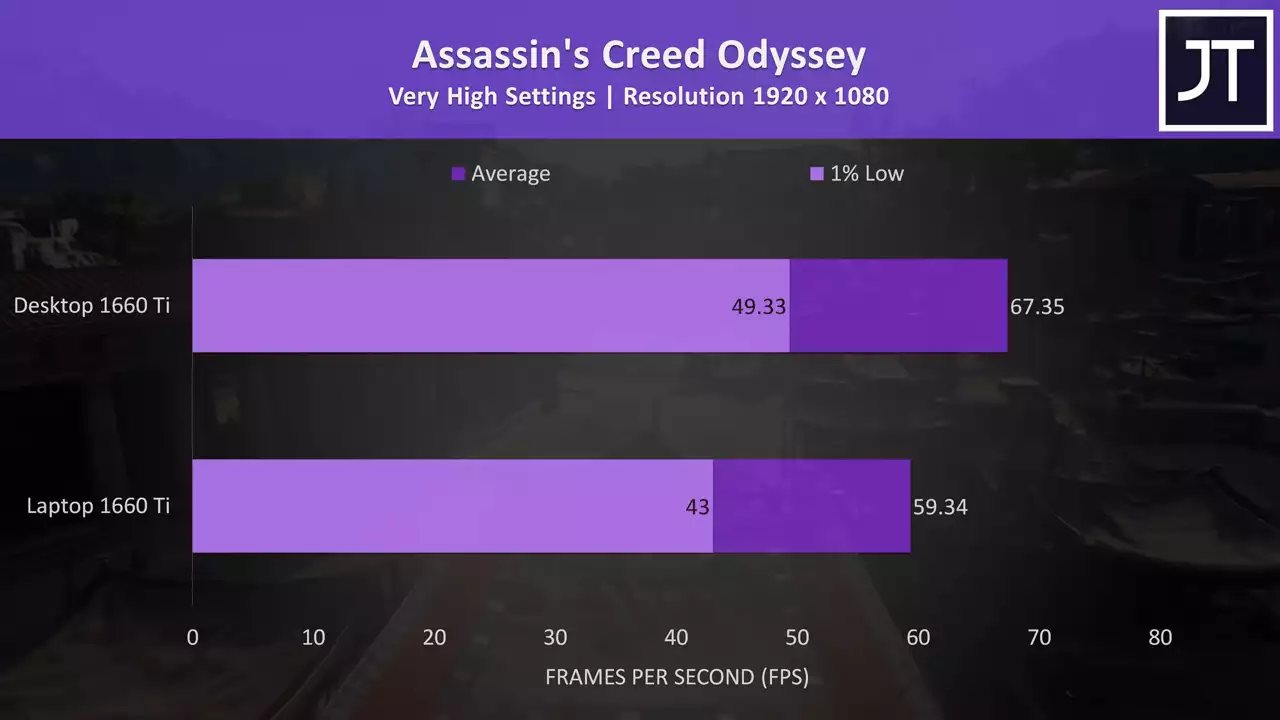 Assassin’s Creed Odyssey was also tested with the built-in benchmark. There was a lower 13% higher average frame rate with the desktop graphics in this one.
Assassin’s Creed Odyssey was also tested with the built-in benchmark. There was a lower 13% higher average frame rate with the desktop graphics in this one.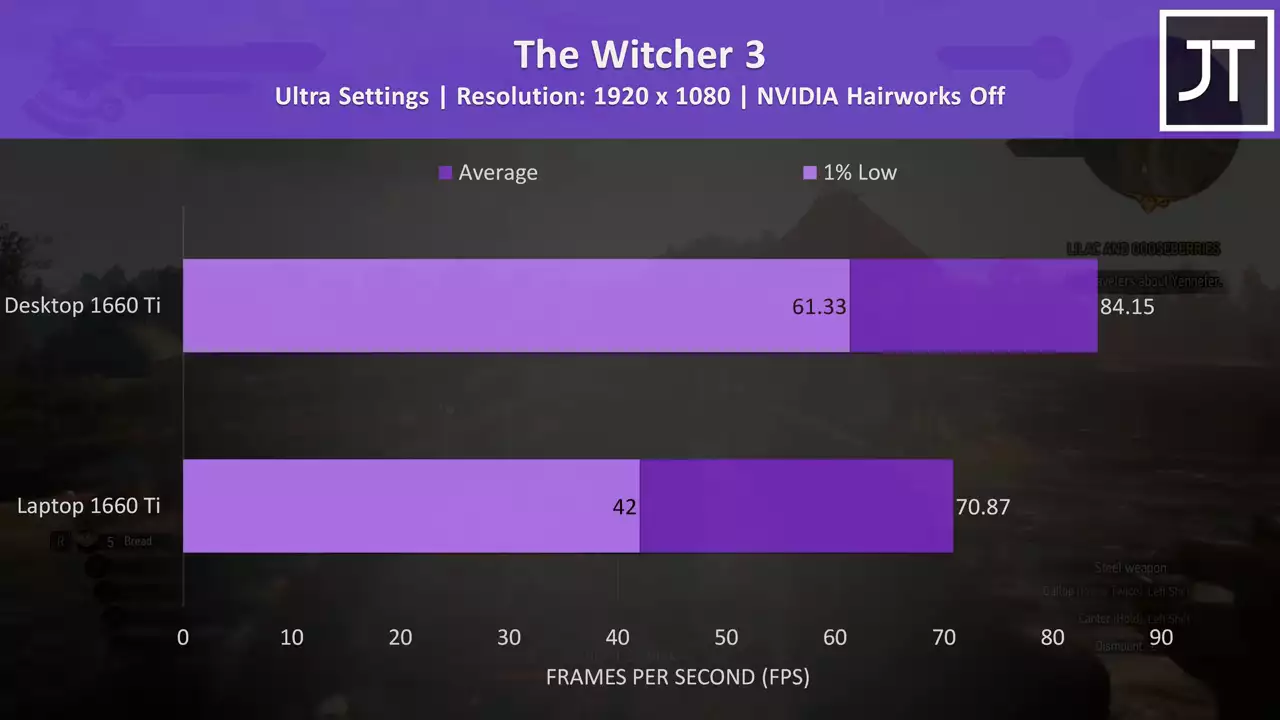 The Witcher 3 was tested in the same area of the game with both machines, and there was a fairly big 19% improvement with the desktop graphics here.
The Witcher 3 was tested in the same area of the game with both machines, and there was a fairly big 19% improvement with the desktop graphics here. 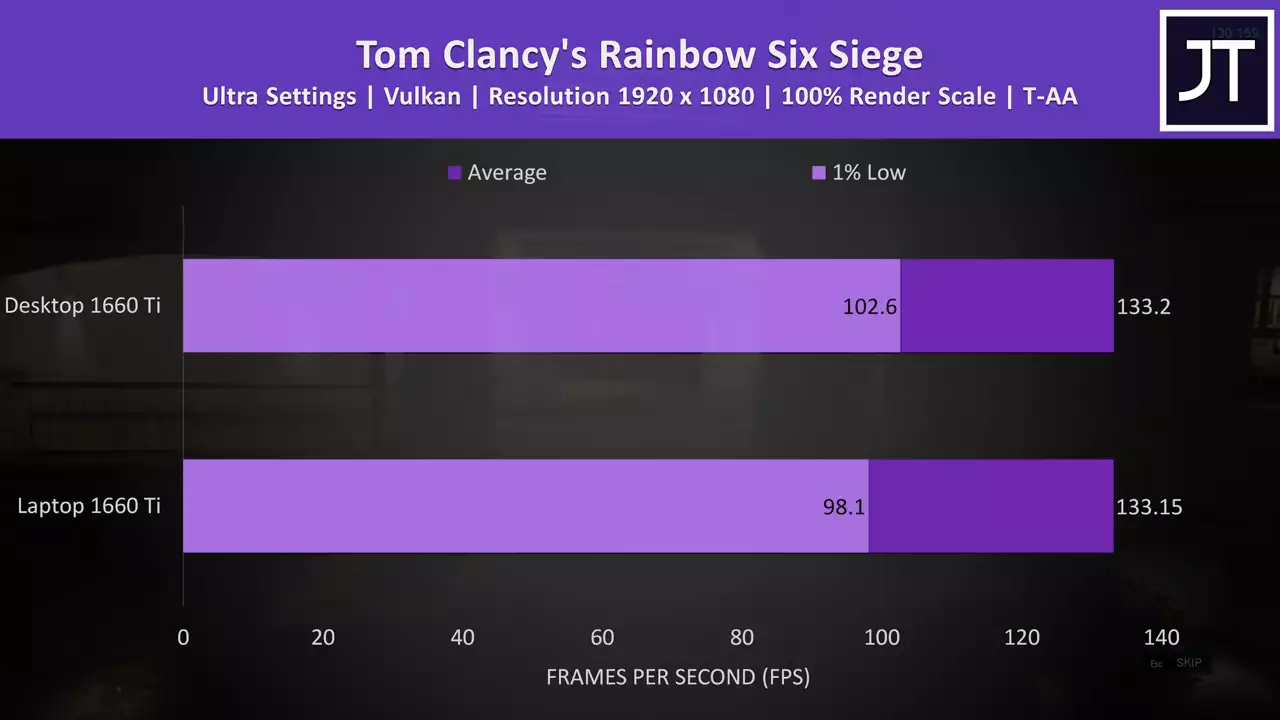 Rainbow Six Siege was also tested using the games benchmark tool, and there was almost zero difference between the two here in average FPS using Vulkan, but this was the only game out of 16 that I tested to see basically no change.
Rainbow Six Siege was also tested using the games benchmark tool, and there was almost zero difference between the two here in average FPS using Vulkan, but this was the only game out of 16 that I tested to see basically no change. 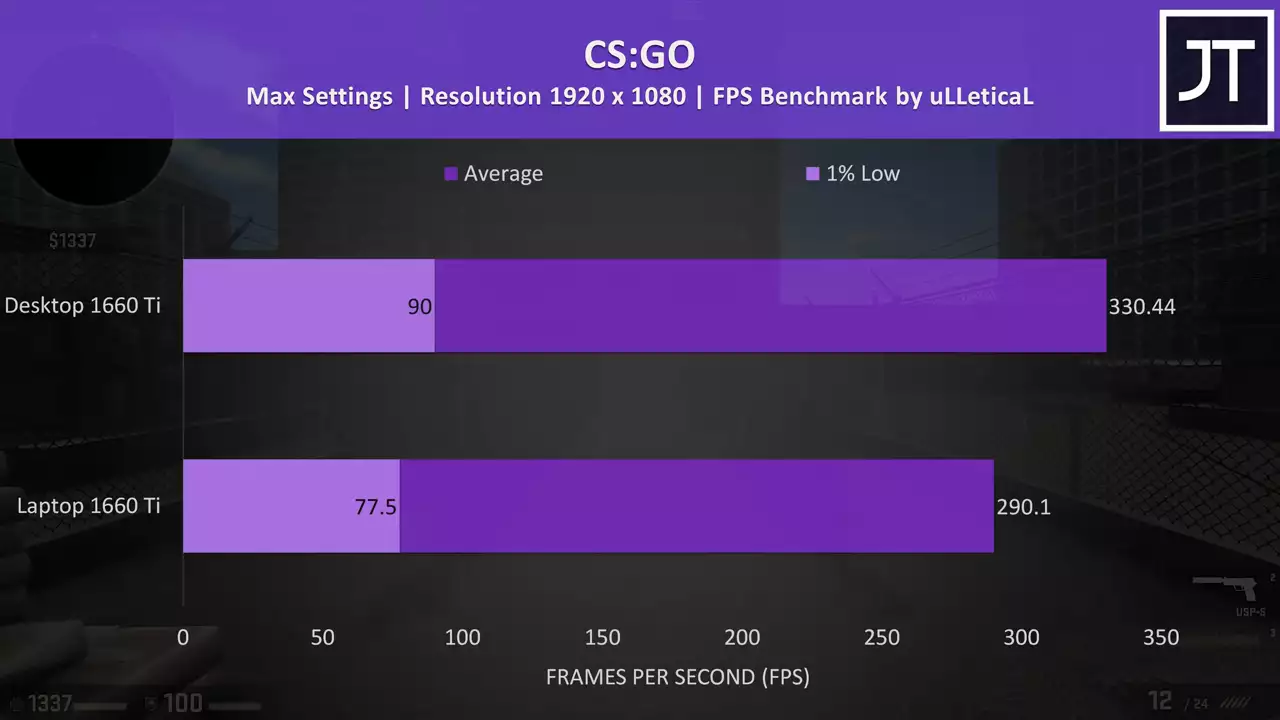 CS:GO was tested with the Ulletical FPS benchmark, and there was a below average FPS difference here, with a 14% increase to average FPS with the desktop graphics. Generally in this game the CPU matters more than the GPU though.
CS:GO was tested with the Ulletical FPS benchmark, and there was a below average FPS difference here, with a 14% increase to average FPS with the desktop graphics. Generally in this game the CPU matters more than the GPU though. 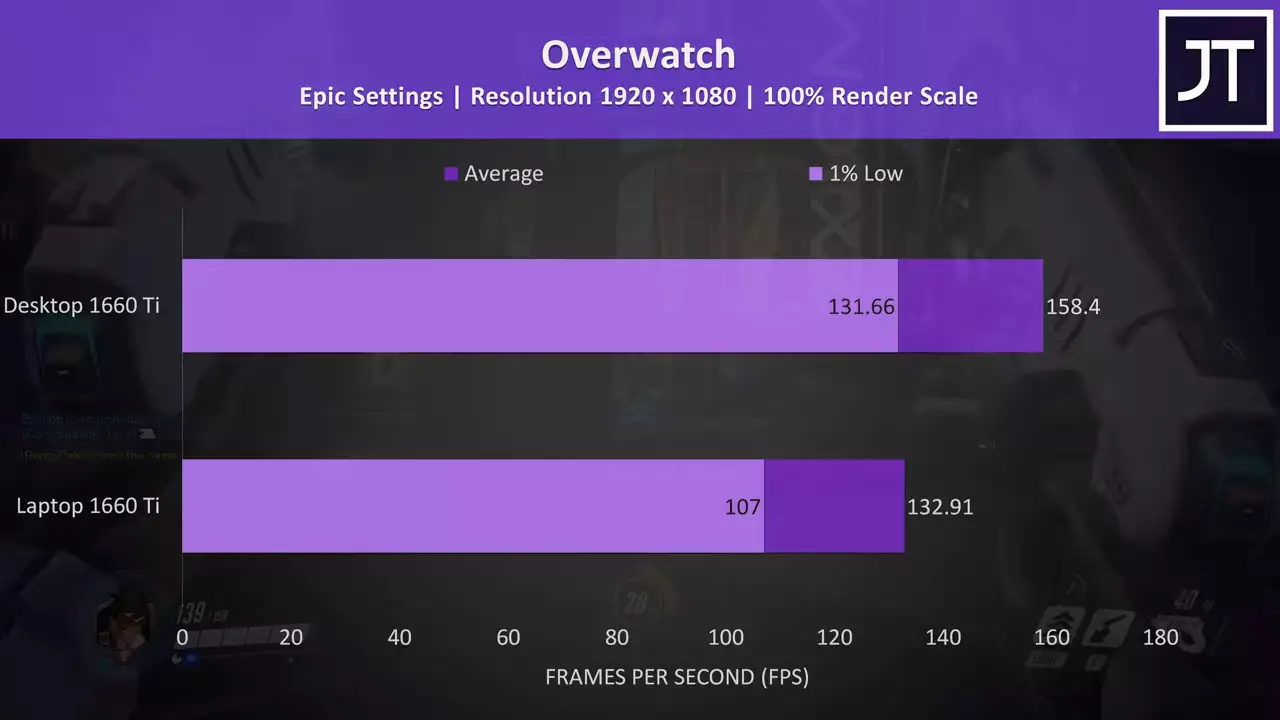 Overwatch is another less demanding game, and either option can still produce excellent frame rates even with the highest epic setting preset, however the desktop still had a 19% lead when it came to average FPS.
Overwatch is another less demanding game, and either option can still produce excellent frame rates even with the highest epic setting preset, however the desktop still had a 19% lead when it came to average FPS. 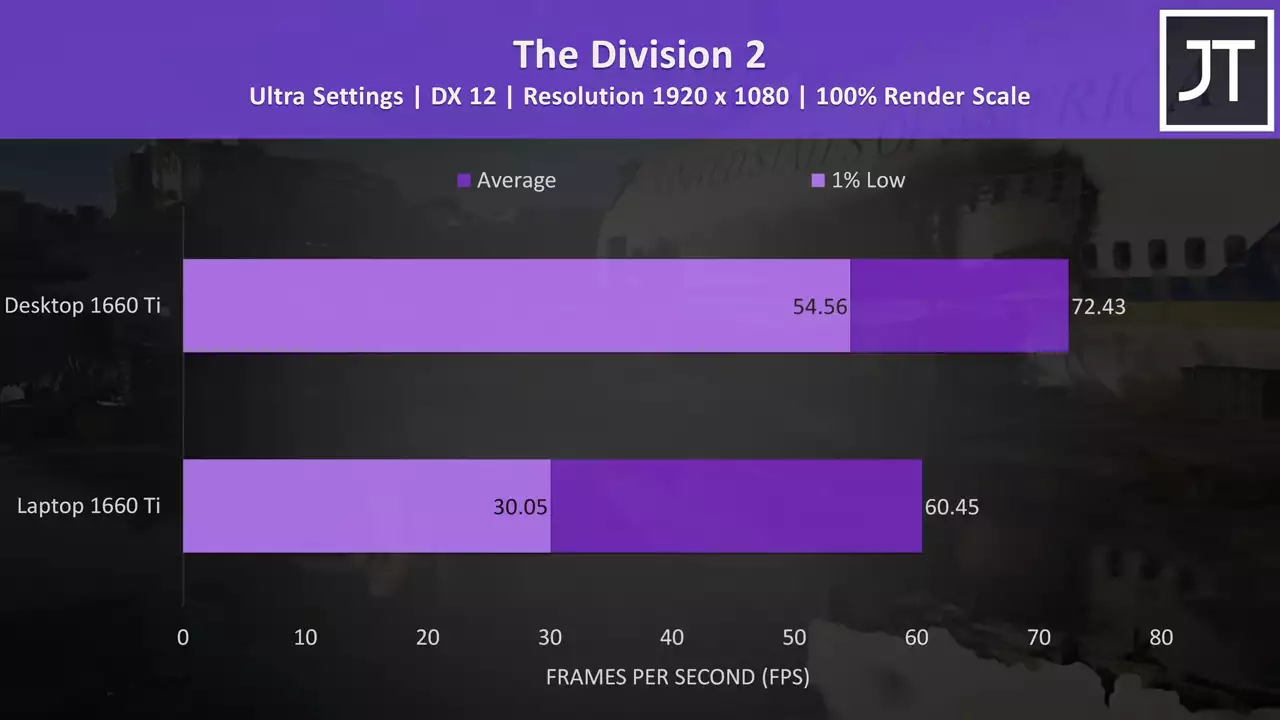 The Division 2 was tested with the games benchmark tool, and there was a similar improvement to average frame rate here of 20%, however there was a massive 81% boost to the 1% low. Generally 1% low changes are more sensitive to the CPU, so it’s hard to say how much of this is due to the 8700K.
The Division 2 was tested with the games benchmark tool, and there was a similar improvement to average frame rate here of 20%, however there was a massive 81% boost to the 1% low. Generally 1% low changes are more sensitive to the CPU, so it’s hard to say how much of this is due to the 8700K.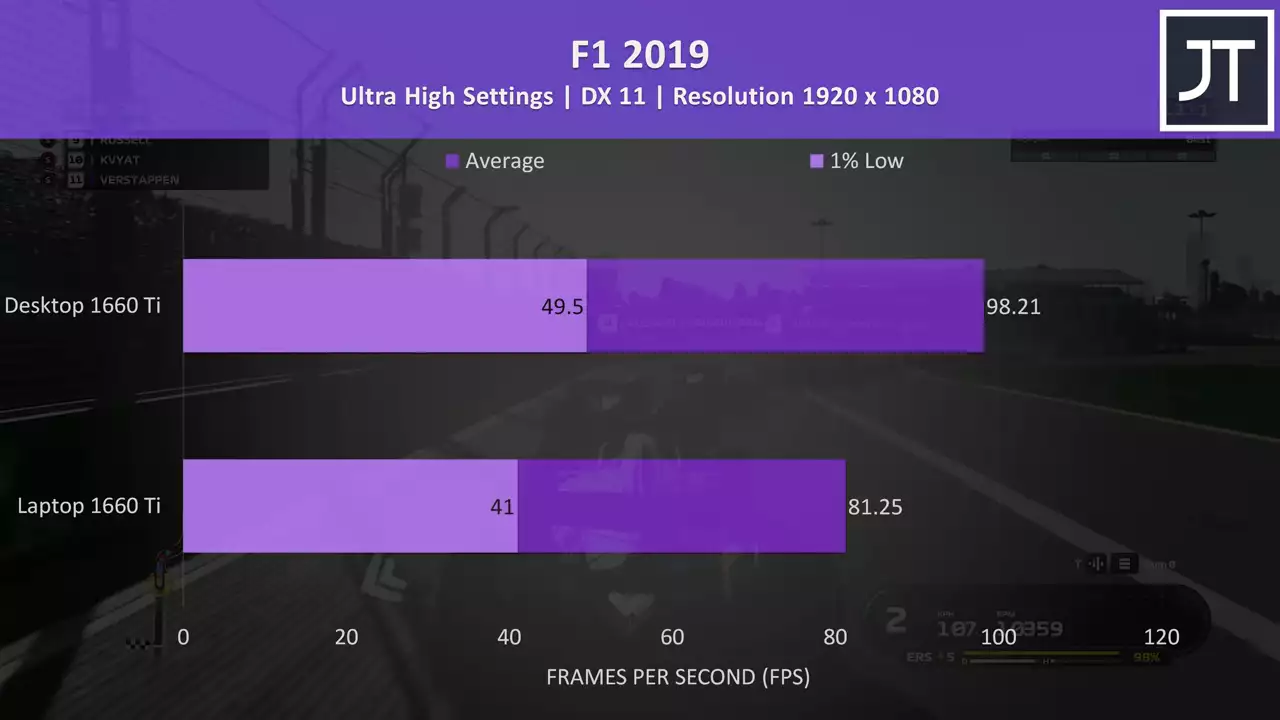 F1 2019 was also tested with the built-in benchmark, and this game saw the third largest improvement out of all games tested with the desktop graphics, which was coming out 21% ahead, though there was a smaller difference between the 1% low.
F1 2019 was also tested with the built-in benchmark, and this game saw the third largest improvement out of all games tested with the desktop graphics, which was coming out 21% ahead, though there was a smaller difference between the 1% low.
These are the differences when looking at all 16 games tested. 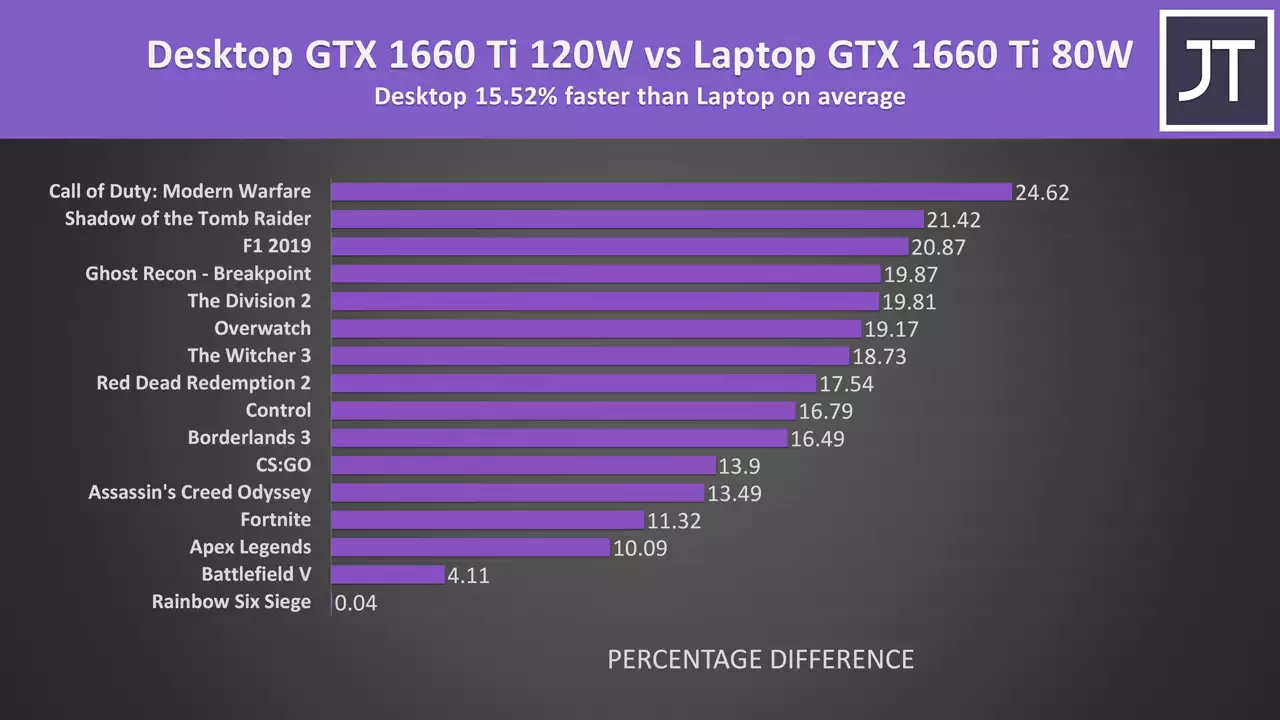 On average the desktop GTX 1660 Ti was around 15.5% faster when compared to the laptop GTX 1660 Ti. It really depends on the game, some like Rainbow Six Siege saw essentially no difference, while others scored more than 20% higher.
On average the desktop GTX 1660 Ti was around 15.5% faster when compared to the laptop GTX 1660 Ti. It really depends on the game, some like Rainbow Six Siege saw essentially no difference, while others scored more than 20% higher.
Here are the differences in temperatures, it’s worth noting that the results will vary between laptops, and even based on the graphics card in use in the desktop, so these are just the differences between the hardware I’ve tested here.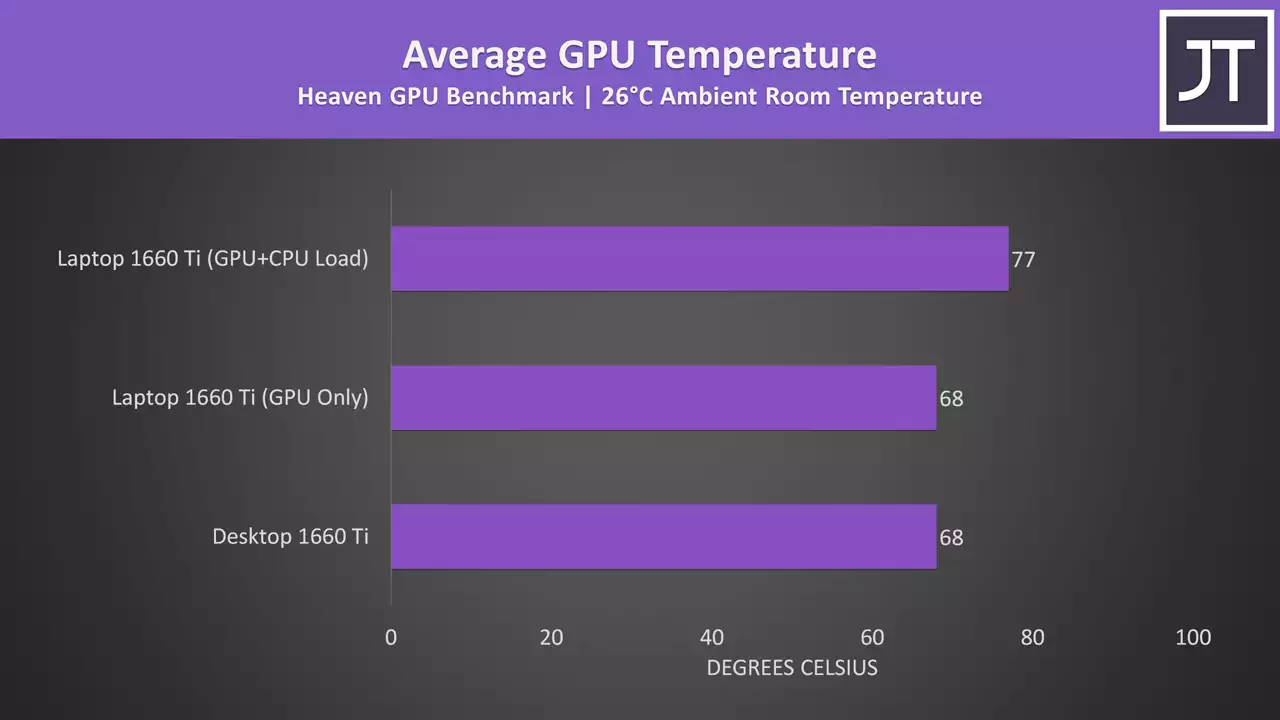 With the desktop, the cooling isn’t shared with the processor, so it runs cooler, plus the GPU has way more dedicated cooling area.
With the desktop, the cooling isn’t shared with the processor, so it runs cooler, plus the GPU has way more dedicated cooling area.
As the laptop has shared heat pipes between CPU and GPU I’ve included results with and without the CPU being hit with load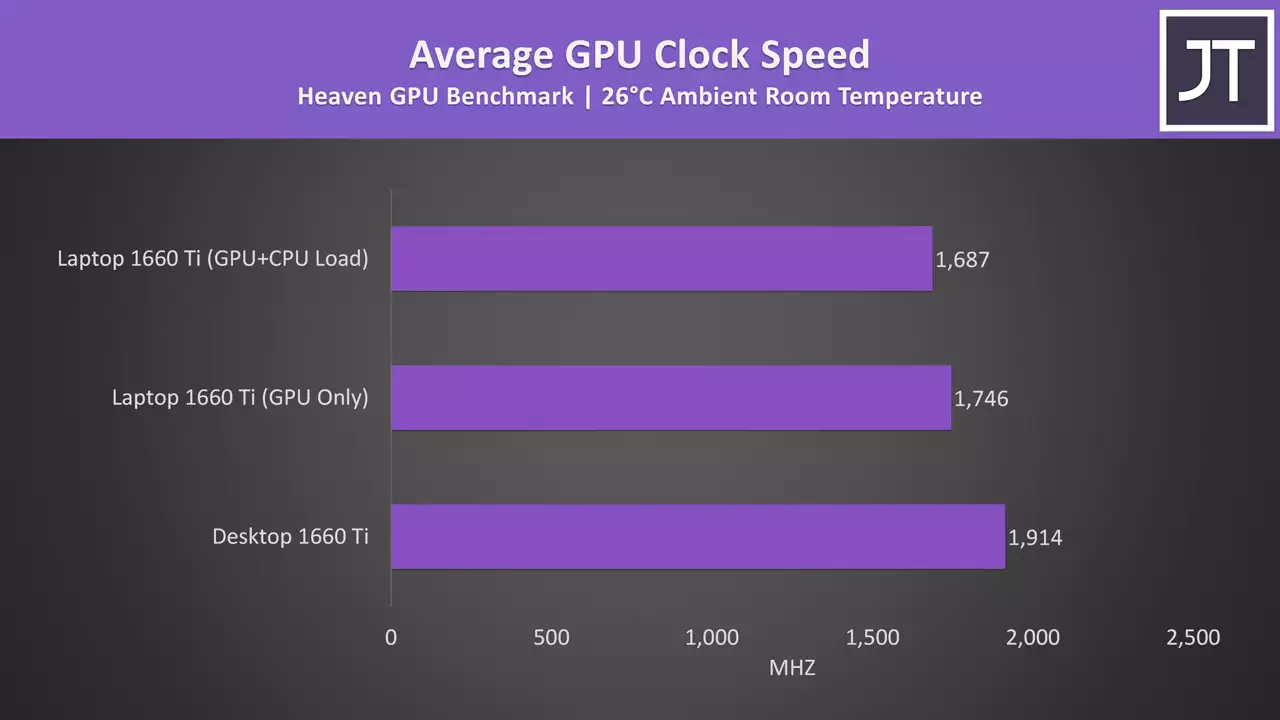 as the CPU would get put to work in an actual game.
as the CPU would get put to work in an actual game.
These are the differences in power draw from the wall with The Witcher 3 running on both at max settings. 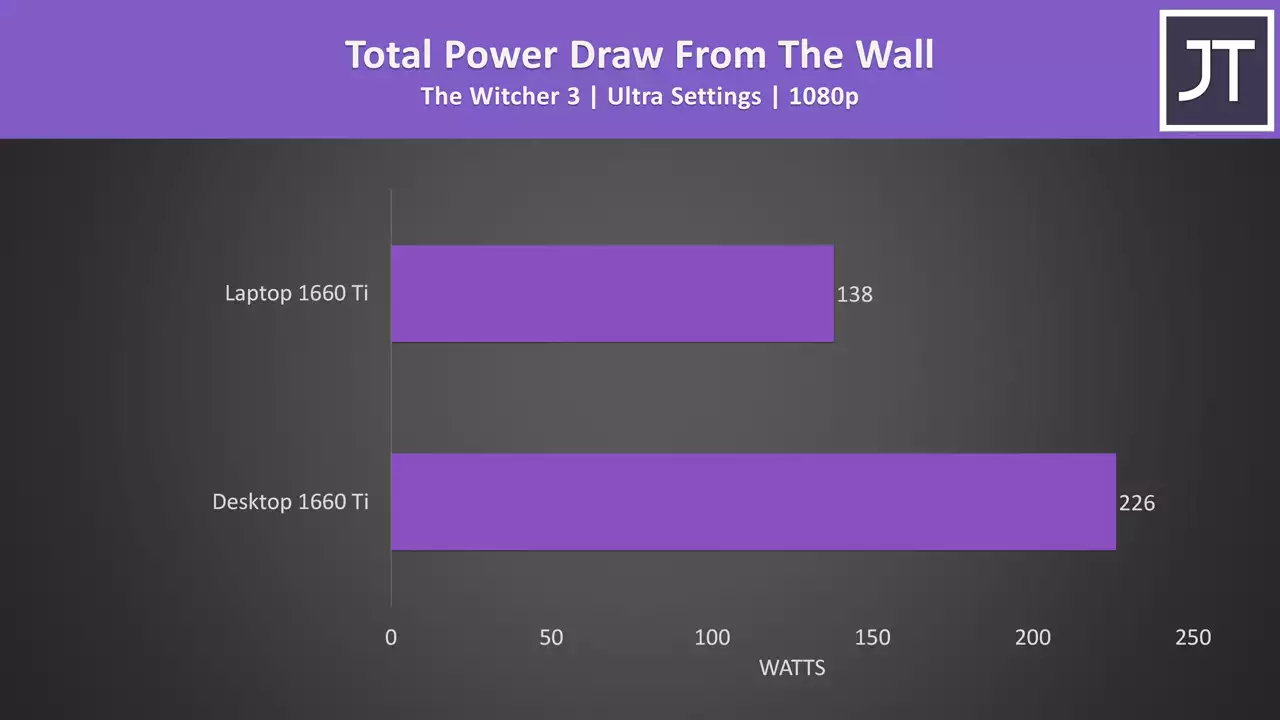 The desktop was using 63% more power in this test, but keep in mind that its CPU is also more power hungry.
The desktop was using 63% more power in this test, but keep in mind that its CPU is also more power hungry.
Obviously the desktop would have done better if I didn’t cap the CPU, but the point was to try to compare GPU in the laptop and desktop as fairly as possible, so all other aspects need to be on a level playing field. In general higher CPU performance with the desktop should result in increased 1% low performance, so more stability.
So then, which should you get? Laptop or desktop graphics? In the end, the question as to whether or not you need a laptop depends on how much you need portability. If you don’t need portability, build a better performing desktop PC for less money, it will run cooler too. If you need to take your machine with you, then a laptop is a better choice, and even with the laptop version the 1660 Ti is still a nice sweet spot, currently capable of playing pretty much any game you can throw at it with good settings at 1080p. I suspect there will be more of a difference between other graphics like the RTX 2060, as the power limits between the desktop and laptop versions are larger, let me know if you want to see more videos like this comparing other graphics like the 1650 or 2060 down in the comments.
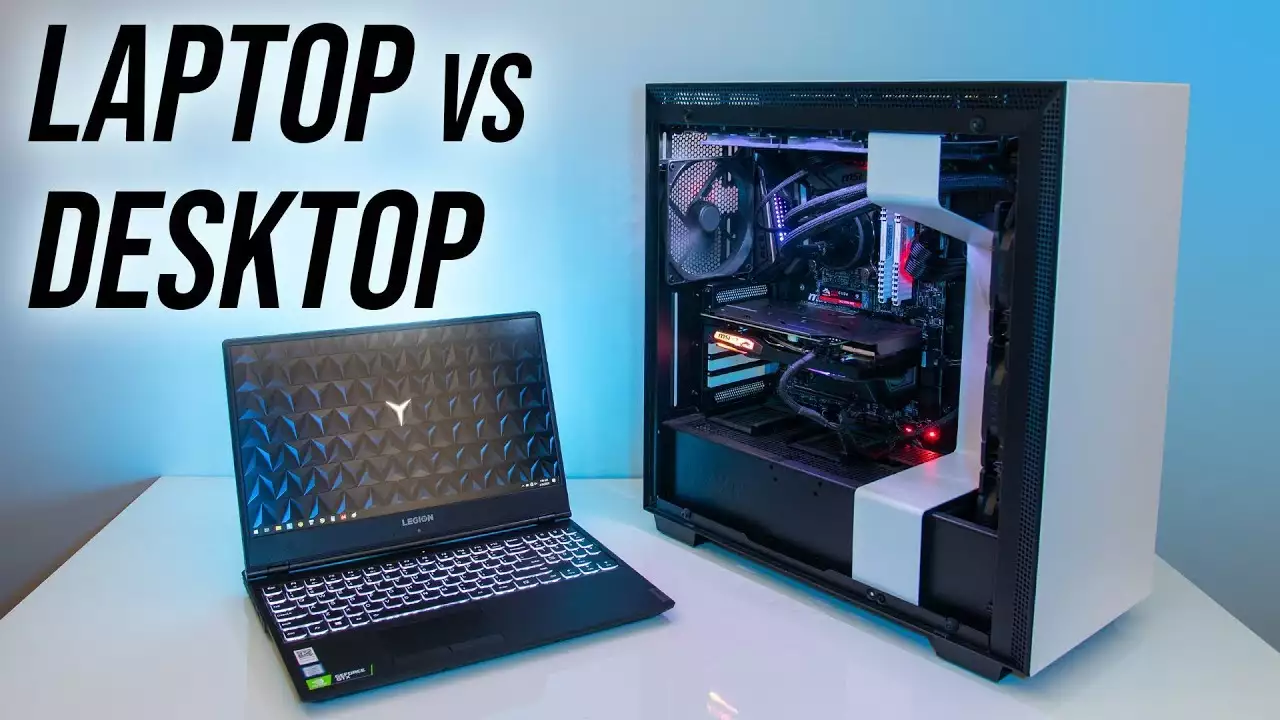

No comments yet